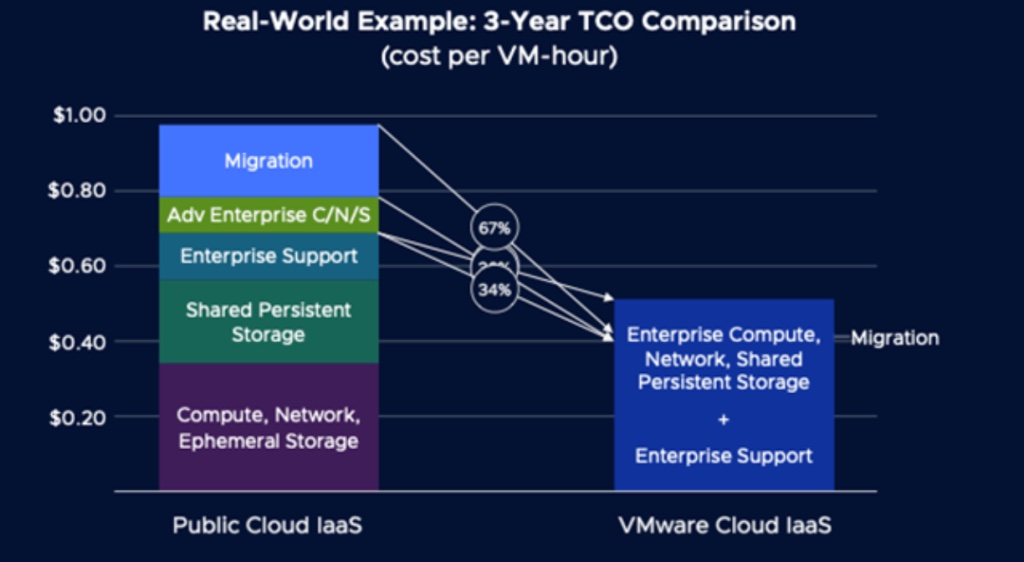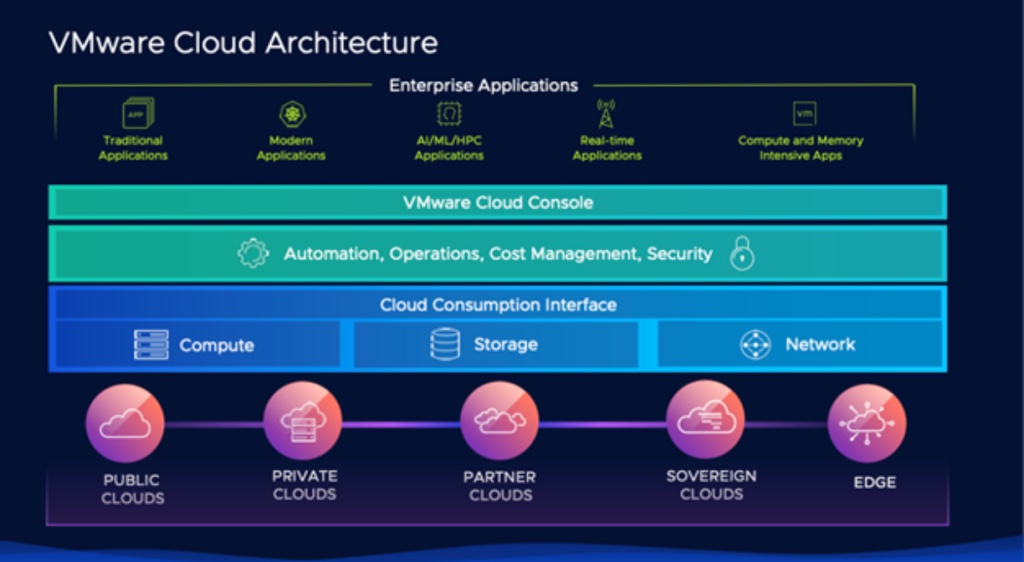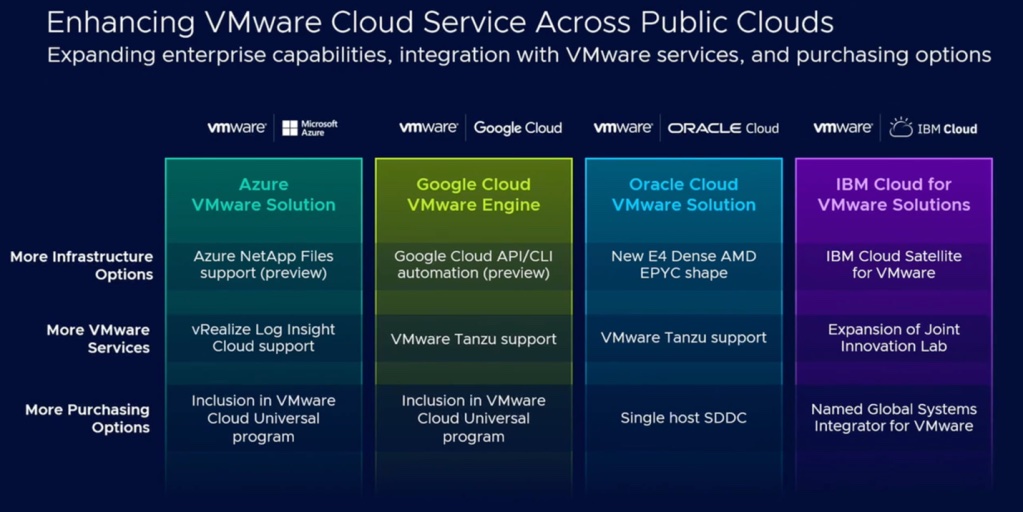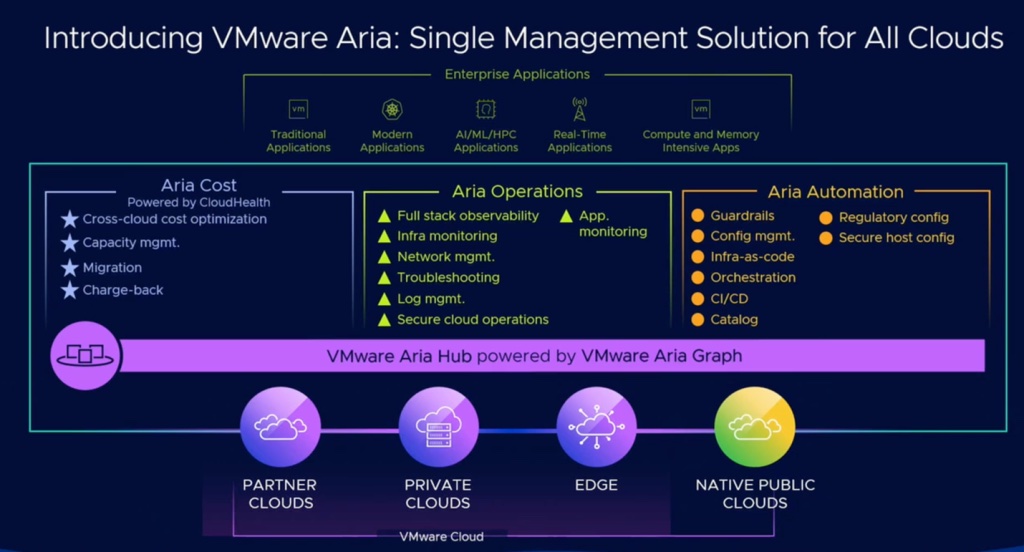As multi-cloud adoption expands, lessons learned keep coming in. Solution providers are rising to the challenges of enterprises seeking the most cost-effective, reliable and secure way to embrace multi-cloud.
More and more companies are pursuing three key cloud initiatives to help maximize value while minimizing TCO:
- Modernizing infrastructure
- Modernizing operations
- Modernizing applications
“We found that 83% of enterprises are already distributing applications across their own data centers, in one or more public clouds, and edge environments. As a result, roles within IT are also changing, with 90% of individuals in these same companies having roles that now span multiple cloud environments,” said Mark Lohmeyer, SVP and General Manager of the VMware Cloud Infrastructure Business Group, during VMware Explore 2022.
“We’re living now in a much more distributed, multi-cloud world,” Lohmeyer continued. “However, with this distributed environment comes a whole new set of challenges, because we now have these disparate cloud operating models, skillsets, tools and processes, SLAs, and security models.”
In many environments, that can lead to greater risk, longer time-to-value and higher cost.
“One question we’re often asked is, ‘What is the total cost of ownership (TCO) of VMware Cloud running as a native service in a public cloud compared to alternatives?’” Lohmeyer said.
VMware studied the question with hundreds of VMware Cloud users and discovered that TCO can be 67% lower with VMware Cloud.1 Customers need to look not only at the technology costs but all the enterprise-class support and workload migration costs. Because VMware has both private and public cloud services, it's a lot easier and faster for customers to move their SDDC/private-cloud workloads to VMware Cloud on public clouds. This helps create a virtuous cycle in which more companies embrace multi-cloud architectures while freeing up investment for new innovation initiatives.
Lower Cost of Ownership for Business-Critical Applications
In apple-to-apple comparisons, VMware Cloud has lower TCO than other alternatives.

Lower TCO vs. Public Cloud IaaS:
- Persistent storage included with the service
- Enterprise network and storage features included
- Resource optimisation for higher consolidation
- Minimal migration and retraining costs
- Phone and online support included
Responding to Users’ Multi-Cloud Needs
During the keynote focused on cloud infrastructure transformation, Lohmeyer and others described how enterprises’ different multi-cloud journeys were themselves leading to technology innovations. As they transform their infrastructures, many encounter challenges and new requirements that spur the need for new solutions.

For example, Lohmeyer said, many enterprises moving workloads to VMware Cloud on AWS have realised they’d prefer to scale their storage requirements independent of their compute needs. “It’s been a longstanding customer request,” he said.
To date, storage for VMware Cloud on AWS has been based on VMware vSAN, leveraging economical, directly attached SSDs for high-performance, low-cost host-based storage integrated directly into VMware Cloud. But as enterprises continued moving workloads to the cloud, some realised they needed more storage than compute power and would prefer to address the two separately. Meeting that request, VMware introduced VMware Cloud Flex Storage, a VMware-based, cloud-native storage service.
“What we've done is decoupled storage so users can scale storage capacity and performance independent from compute,” Lohmeyer said.
In fact, companies’ experiences with multi-cloud have led to several platform improvements. Complementing requests for more flexibility in storage are VMware Cloud enhancements to offer the same level of flexibility on the compute side of the equation.
Today, VMware Cloud on AWS is based on a dedicated host model: enterprises buy a cluster of hosts fully dedicated to their workloads, ideal for large-scale environments.
“But what we’ve heard is they also want the ability to start small at a lower cost and then easily scale up,” Lohmeyer said. To that end, VMware launched VMware Cloud Flex Compute, which allows users to create an elastic pool of resources then provision workloads into that pool.
In response to the growing threat of ransomware, Lohmeyer described VMware’s new Ransomware Recovery capability, now part of VMware Cloud Disaster Recovery. In the event of a ransomware attack, it gives users the ability to revert to the last good copy of every VM in their environment.
All told, Lohmeyer estimated, “This is probably the most innovation since we launched the service.” That extensive innovation includes expanding capabilities across all instances of VMware Cloud in the public cloud, including on Microsoft Azure, Google Cloud, Oracle Cloud and IBM Cloud.

The Evolution of Multi-Cloud Management
With all the new capabilities of multi-cloud solutions, multi-cloud management is undergoing an evolution of its own, especially as enterprises run applications in private data centers, public clouds, across VMware Cloud platforms, all the way out to the edge.
“Enterprises have overarching management needs,” said Purnima Padmanabhan, VMware SVP and General Manager for Cloud Management. Still, they are setting up teams of engineers to integrate products across platforms and clouds to answer seemingly straightforward questions, such as:
- Where should I deploy?
- How do I consistently apply policies?
- How do I balance cost and performance?
- How do I view cost, security and performance across the entire environment?
“When you think about management, it’s an alphabet soup—log management, cost management, catalog, migration, orchestration and network management,” Padmanabhan said during the keynote. “Many different teams, many different tools, and these tools vary on a per-cloud basis.”
To answer the questions that enterprises have about multi-cloud management, Padmanabhan explained, VMware created a new platform called VMware Aria.
“If you want to connect and answer questions across these various disciplines and technologies, you need to have a common language,” she said.

“Companies can now ask, ‘What is the aggregated cost of my application?’ and VMware Aria pulls that information from data sources. ‘What does my application latency look like? Is it securely configured? Is it using cloud resources properly?’” Padmanabhan explained.
All are fundamental questions when managing multiple clouds. Answering them in one place is critical.
IT Architecture of the Future
At the end of the day, as enterprises progress on their multi-cloud journeys and learn what works best, with VMware, they can enjoy “pragmatic modernisation” based on common platforms, enterprise-class capabilities and a management model that allows them to add cloud resources that seamlessly scale.
“This is a compelling architecture for where we see the world going,” Lohmeyer concluded.
1.VMware internal data based on customer engagements, May 2022

